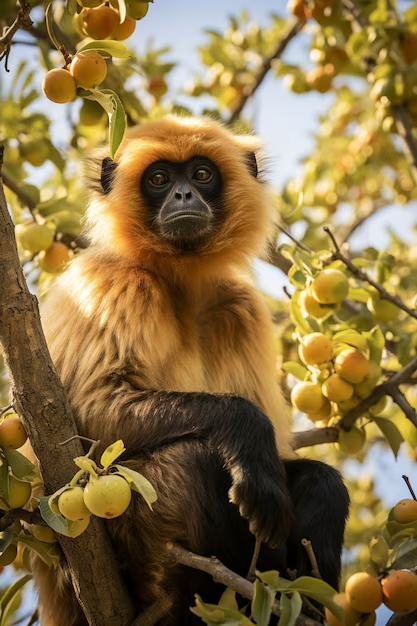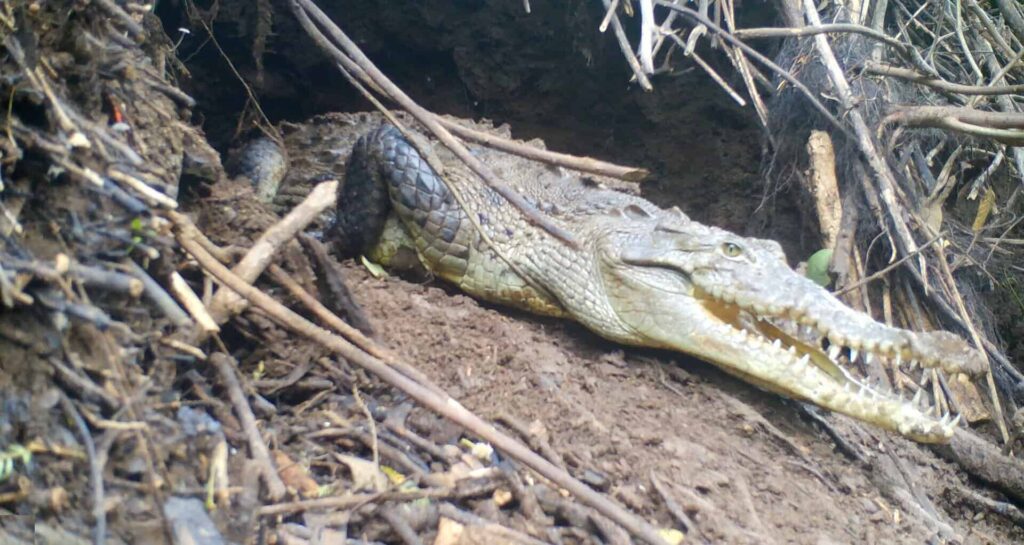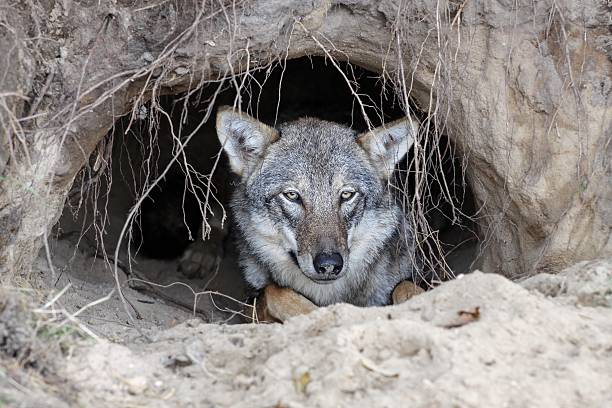Animals are no different from us; they also need a home to live and protect themselves after a long day. When these creatures build their dreams and return, we can only imagine a home that makes them feel safe and cared for. But these places are called animal homes; how do these places come into being? This article will provide details about all animals and their homes.
What is a Home for Animals?
For the animals, home is, in fact, much more than just a roof over their heads. It is where the sourcing of food, water, security, and even space to raise young ones can be made available. An animal’s home, popularly termed an animal habitat, can vary from an anthropogenic form, such as a bird building a nest, to a natural formation, such as a cave for a bear. In fact, homes are not just important for them – they’re necessary.
Why Do Animals Need Homes?
Animals need homes for several reasons:
- Protection from Predators: Homes offer safety from enemies.
- Shelter from Weather: Harsh weather conditions like storms or extreme heat make a home essential.
- Raising Young: A safe place to nurture their babies.
- Storage for Food: Some animals, like squirrels, store food in their homes for tough times.
- Rest and Recovery: Homes provide animals with a secure place to rest.
Difference Between Habitat and Shelter
| Aspect | Habitat | Shelter |
|---|---|---|
| Definition | A habitat may be defined as an area surrounding a particular animal comprising food, water, and shelter. | A shelter is a particular structure or site in the habitat that brings safety and warmth. |
| Purpose | Provides all amenities necessary for biological survival, for example, food, water, and housing. | Offers protection from predators, weather, and other dangers. |
| Examples | A forest for deer, a river for fish, a desert for camels. | A bird’s nest, a rabbit’s burrow, a lion’s den. |
| Scope | Broader—includes all elements of an animal’s living environment. | Narrower—focuses on a particular spot or structure for safety. |
| Dependence | An animal cannot survive without its habitat. | Shelter is optional for some species, but beneficial for safety. |
| Usage | Describes the overall ecosystem or area. | Refers to the specific location an animal uses for protection. |
List of Animals and Their Home Names
| Animals | Home |
|---|---|
| Bear | Den |
| Bird | Nest |
| Lion | Den |
| Tiger | Lair |
| Rabbit | Burrow |
| Deer | Thickets |
| Cattle | Barn |
| Chicken | Coop |
| Dog | Kennel |
| Horse | Stable |
| Duck | Pondside Nest |
| Fox | Den |
| Goat | Pen |
| Donkey | Shed |
| Koala | Tree Hollow |
| Monkey | Tree Canopy |
| Ostrich | Ground Nest |
| Panda | Bamboo Thicket |
| Pig | Sty |
| Pigeon | Loft |
| Rat | Hole |
| Zebra | Savannah Thickets |
| Beaver | Lodge |
| Eagle | Cliff Nest |
| Penguin | Ice Burrow |
| Hyena | Den |
| Seal | Ice Den or Beach |
| Otter | Holt |
| Buffalo | Grassland Spot |
| Squirrel | Drey |
| Polar Bear | Snow Den |
| Crocodile | Riverbank Hole |
| Wolf | Den |
| Kangaroo | Shaded Scrub |
| Elephant | Shade Trees |
Disclaimer: Habitat details may vary based on specific species and environmental conditions.
How Do Animals Build Their Homes?
1. Bear – Den

During hibernation and raising their cubs, bears use dens as their safe area; these can be caves, hollow trees, or burrows that they dig in remote areas. These dens serve as shields against predators and harsh environments, and factors like particularly during the cold months.
2. Bird – Nest

Birds use twigs, leaves, feathers, and grass to make nests within trees, bushes, or cliffs. These nests are more enclosed structures and provide a safe environment for birds when laying eggs and taking care of their chicks. Each bird species is unique in terms of structure and preferred location.
3. Lion – Den

Dens are suitable places for lions to rest and nurse their cubs. They are located within caves, bunches of thick bushes, or even rocky ledges. These places are essential as shields for the young lions whenever it is hot and dry in Africa. Lions use them primarily for parenting and safety purposes.
4. Tiger – Lair

High vegetation, high grass, or caves are easy places for tigers to give birth and nurture their cubs; these are also known as lairs. Such places enable them to stay undetected by other enemy animals. These animals are usually near plenty of water sources and wish to be as far away from civilisation as possible.
5. Rabbit – Burrow

Rabbits form complex sets of tunnels and rooms burrowed underground. The complexity of the structure aids in preventing predators while also providing protection from extreme weather conditions. It can also provide safe food and a home to nurture their children.
6. Deer – Thickets

In order to escape their predators, deer look for cover in dense vegetation or thickets, which are usually found in forests. They use these natural shelters as they give the deer a chance to rest during the day while still being able to blend in with their surroundings. Thickets also help conceal them from rough weather.
7. Cattle – Barn

Cattle trust that barns are safe places to be domesticated, as they feel insulated from difficult weather conditions and predators. Barns provide an adequate number of feeding spots, rest areas, and shelter, which helps farmers keep their cattle healthy throughout the year.
8. Chicken – Coop

As chickens are domesticated, coops are human-built houses that help keep them safe from any threat and warm. Coops typically consist of nesting boxes for egg-laying and space for roosting. They also use proper insulation combined with proper airflow/ ventilation.
9. Dog – Kennel

Dense vegetation, thickets, or some other cover is usually a home to deer. Dogs are also put into spacious containers or enclosures to rest and sleep. Kennels, whether inside or outside, are places where dogs can safely hide from the weather and are meant to provide comfort.
10. Horse – Stable

The stables are the shelters where horses are stowed and fed the required nutrients, including food and water. Separating individual horse stalls also comprises sufficient free area for movement and rolling. They, however, are conducive to the health of the horse.
11. Duck – Pondside Nest

Ducks are known to construct their nests in close proximity to ponds and water bodies. Such nests are formed with a mixture of grass and reeds stuffed with feathers to keep them and their eggs warm and dry. This location is advantageous as food is stabilised, and security is assured.
12. Fox – Den

Foxes utilise dens, excavating or rehabilitating old ones to rear their young animal kits. These structures contain a large number of passages and chambers for storage and protection. These confined structures serve foxes as habitats against enemies and severe climatic conditions.
13. Goat – Pen

To safeguard domestic goats, human beings build pens, which are used for housing these animals. These structures provide roofs and protection from rain and predators. The goats equally use such areas for resting and interacting with other goats in the herd.
14. Donkey – Shed

Donkeys occupy a shed constructed to provide adequate shelter against extreme weather conditions like rainfall or excessive heat. These structures provide shade and cover while allowing the donkeys to access feed and water. They create a peaceful environment for the animals to rest.
15. Koala – Tree Hollow

Koalas use tree hollows or branch forks situated high on the tree for housing. Such natural dwellings allow them to avoid enemies while allowing them to eat eucalyptus leaves, which are the majority of their food. At night, they sleep and retreat into their hollows.
16. Monkey – Tree Canopy

Monkeys are most active in tree canopies, where they can build makeshift nests using twigs and leaves. Such elevated areas ensure safety from ground enemies but allow easy access to their diets, which include a variety of fruits and other edible sources.
17. Ostrich – Ground Nest

Ostriches use their feet to scratch out shallow nests and lay eggs in them. These nests are placed in grassy land, enabling the birds to see incoming danger coming from long-range areas. The ostrich geese closely watch the nests, ensuring that both sexes take care of the ostrich eggs that are at risk.
18. Panda – Bamboo Thicket

Giant pandas live in hollow tree trunks and are often seen in thick bamboo bushes. These locations are ideal for them as they provide cover and warmth while also being close to their food supply—bamboo. Panda bears also use these bushy areas for safety and sleep.
19. Pig – Sty

Humans construct sty (for pigs) that enclose them, allowing for warmth and shelter. Sites also have partitions, round-the-clock feeding areas, and dry bedding to suit the pigs. These spaces also protect the pigs from various attacks and harsh climatic conditions.
20. Pigeon – Loft

Baby pigeons are protected from various predators and hot weather in the nest made using twigs and feathers. Nests made on top roofs or built inside deep basements and lofts are ideal egg-laying places for pigeons. Very often, pigeons will go to the same nesting locations repeatedly.
21. Rat – Hole

Los Angeles Guerrilla Gardening rats have a tendency to dig holes or granarks in the earth, particularly around walls or underneath tree Briar roots. These holes ultimately protect the young, store food, and allow them room to be protected while maturing. All in all, rats utilise these nests to survive.
22. Zebra – Savannah Thickets

The shaded areas of the savanna include thickets and several trees where zebras rest. Such regions create an avenue for shade from the heat and a means of defence against predators, which helps them remain vigilant even as they catch some rest.
23. Beaver – Lodge

Beavers in the lakes or rivers construct lodges of stones, sticks, and mud. These lodges are equipped with nooks that cannot be easily seen to give beavers some safety. It is also a place for food storage for them.
24. Eagle – Cliff Nest

Eagles are large birds of prey that build their nests on high vantage points, like tall trees or cliffs. They refer to these nests as eyries. The eyries are built with sticks, grass, and sometimes feathers, and they provide a secure environment for the young and keep threats away.
25. Penguin – Ice Burrow

Penguins construct burrows in ice and snow or sand to protect their eggs and chicks from cold and predators. Such burrows provide thermal insulation while also providing shelter from wind and bad weather conditions.
26. Hyena – Den

Caves or old burrows form the dens where baby hyenas are born and raised. These dens are well dispersed, so they also provide shelter and reduce the amount of sunlight penetrating into them. Such areas are well suited for caring for young ones and even fleeing enemies.
27. Seal – Ice Den or Beach

Seals rest on beaches or develop dens in icy areas to protect themselves and their calves. These dongas also shield seals during winter from strong winds. Since they have easy access to water places, they are usually placed on the corners.
28. Otter – Holt

Otters make holts by the sides of rivers on tree stumps, mud, or even their households. Such structures are useful in establishing defence against other species and nurturing minors. Holts are galaxies always within arms reach of the much-needed water.
29. Buffalo – Grassland Resting Spot

Buffaloes prefer to rest in open grasslands close to water bodies. This place provides food resources and security to their en masse companionship. Buffaloes sleep in this spot, which is also good for grazing and hunting.
30. Squirrel – Drey

Squirrels construct round structures called dreys on the tallest parts of trees using twigs, leaves, and moss. These dreys provide a safe place from bad weather, access to food, and a place to breed. They are surrounded by thick trees and found at the tops of tree branches.
31. Polar Bear – Snow Den

Polar bears resort to making snow dens to defend against cold winds and snow. Cubs are born and nursed in these dens during winter. Such structures are crucial in actively supporting life during extremely icy Arctic conditions.
32. Crocodile – Riverbank Hole

The crocodile, in particular, resorts to burrowing into the earth along riverbanks or seeking shelter in water caves that conceal them from predators and also provide protection from sunny weather. Crocodiles also use such river areas or bank areas for egg-laying and protection.
33. Wolf – Den

Wolves also participate in digging their dens or use caves and hollowed logs to rear their young. These dens are somewhat remote and safe, shielding them against predators and extremely low temperatures. Areas with more prey are frequent sites for wolves to dig out or use the den.
34. Kangaroo – Shaded Scrub

Kangaroos also do not live in or create definite houses but look for shaded areas of scrub or portions of land covered with trees to avoid the hot temperatures. These trees protect them against their natural predators while enabling the kangaroos to rest on hot summer days.
35. Elephant – Shade Trees

Elephants are not known for their home-building skills. Instead, they rely on trees for shade or nearby rivers for shelter. It is common to see them gathering underneath trees, where they can easily protect themselves from the sun’s rays while resting.
Frequently Asked Questions
Do all animals build homes?
No, not all animals build homes. Some animals, like elephants and zebras, rely on natural features like trees, thickets, or open areas for shelter rather than creating specific structures.
Which animal carries its home with them?
Turtles, snails, and hermit crabs are some animals that take their home with them. Their exoskeletons make portable homes useful for escaping predators or extreme environmental conditions. It also serves as a cocoon that protects it when needed as the shell grows.
How do animals choose the location for their homes?
Animals choose locations based on their security, the amount of food they can provide, and the physical environment. For instance, birds build their nests in the upper places to hide from predators, while beavers construct their lodges closer to food and away from land threats.
Which animals share their homes with others?
Some animals, like prairie dogs, form pairs that share interconnected caves with the other animals in their colony. Entire communities like termite mounds or bee hives may also share a home.








![99math Review: Features, Benefits, Pros & Cons, Alternatives [Latest 2025] 99 maths](https://readus247.com/wp-content/uploads/2023/05/Screenshot-2023-05-19-at-4.29.12-PM-450x190.jpg)